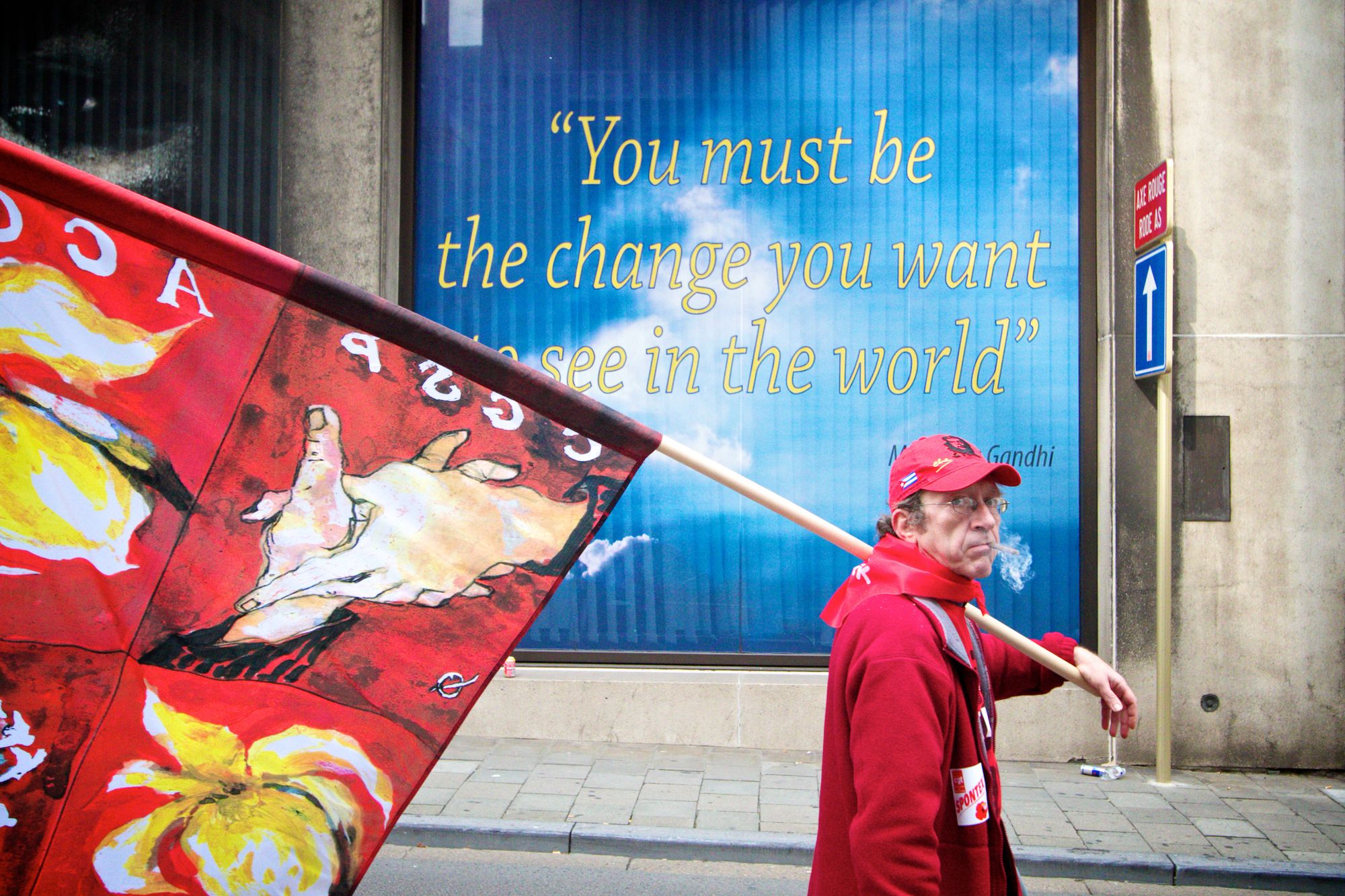
One form of activist project I haven't covered much in this newsletter is providing services directly, to people who need them.
For example, if the media won’t publish the news that matters, you can make a website to carry those stories. If refugees are stranded on boats trying to reach Europe and governments aren't saving them, you can go out to sea and do it yourself. If the education system sucks, you can give free classes that don't.

Activist citizens are good at doing this. They love to improve on what's not working. To step in when a system is failing, and create the alternative. (I documented hundreds of informal groups providing such services in Greece, for example.)
And it's valuable work. But the problem is that once you embark on it, it’s easy to forget what you were building the alternative to. You lose sight of the fact that providing another option, another way, is itself a tactic. In a wider strategy of pushing for systemic change.
Providing services isn't distinct from confronting power. It is confronting power.
Meh, too complicated
I know, changing systems is complex and messy. It's simpler to rush in and address the immediate need.
But by building the alternative, consider what you're also doing:
- challenging the status quo
- highlighting the issue, and
- leading by example
All these actions are separate from that core activity of providing a service. And if you want to have a lasting impact, and persuade others to support your cause, it makes sense to pay attention to them, too.
Challenging the status quo
The first is about your own psychology. Building an alternative is a rebellious act. So treat it like one!
Whenever you work on your activist project, remind yourself and your team of the power you are confronting. Draw your motivation not only from the thought of making a difference for people directly. But also from the fact that you're opposing a failing system.
And do it with a fire in your belly.
Highlighting the issue
Miguel Duarte volunteered for a sea rescue operation at the height of the EU migration crisis in 2016. My interview with him is out today, on DiEM25’s YouTube channel:
The immediate need of Miguel's work was saving lives of refugees. But its real target was the EU's broken asylum procedure, which forced people to cross the Mediterranean however they could. He told me that the core activity of rescue gave his organisation the chance to showcase that underlying issue:
We won’t solve the problem with sea rescue, that’s for sure. [But] the visibility given to us by [sea rescue] can be a tool to get to policymakers. [..] That political work is the only thing that can achieve a long-term solution.
Whatever you're working on, cite that issue boldly in your campaign material, on your website, through your social media channels. Back it up with evidence, like news articles and testimonials. Use the ‘But why?’ technique to get to the root causes of the issue. Tell your audiences why you chose the option of building an alternative, over other approaches.

Leading by example
There is more potential for systemic change when you can scale up the response. And your project could inspire others to do the same. Either to work on the same issue, or to tackle another issue in a similar way.
So if you’ve figured out an innovative way to meet an urgent need, share it. If what you’re doing works, document how you did it. Help others to follow the same process.
This is so rarely done that I don’t have an example to show you. But it could look like answering questions in your campaign material like: How did you go about raising funds? Or putting together a team? What pitfalls did you experience? What took your project to the next level?
Next to every 'join us by clicking here' button on a campaign there should be another that reads:
Or do what we did – here's how
TL;DR
If your activist project is providing services, it might not feel like you're confronting power. But you are. You're engaging in a wider campaign to achieve systemic change.
So don’t sit in your basement quietly building the alternative. Approach your project as if you're challenging the status quo. Put forward the issue you're working on and its root causes, not just your response. And document everything you're doing, so others can follow too.
* * *
Update August 2022: See also "providing services to build trust" for examples.

